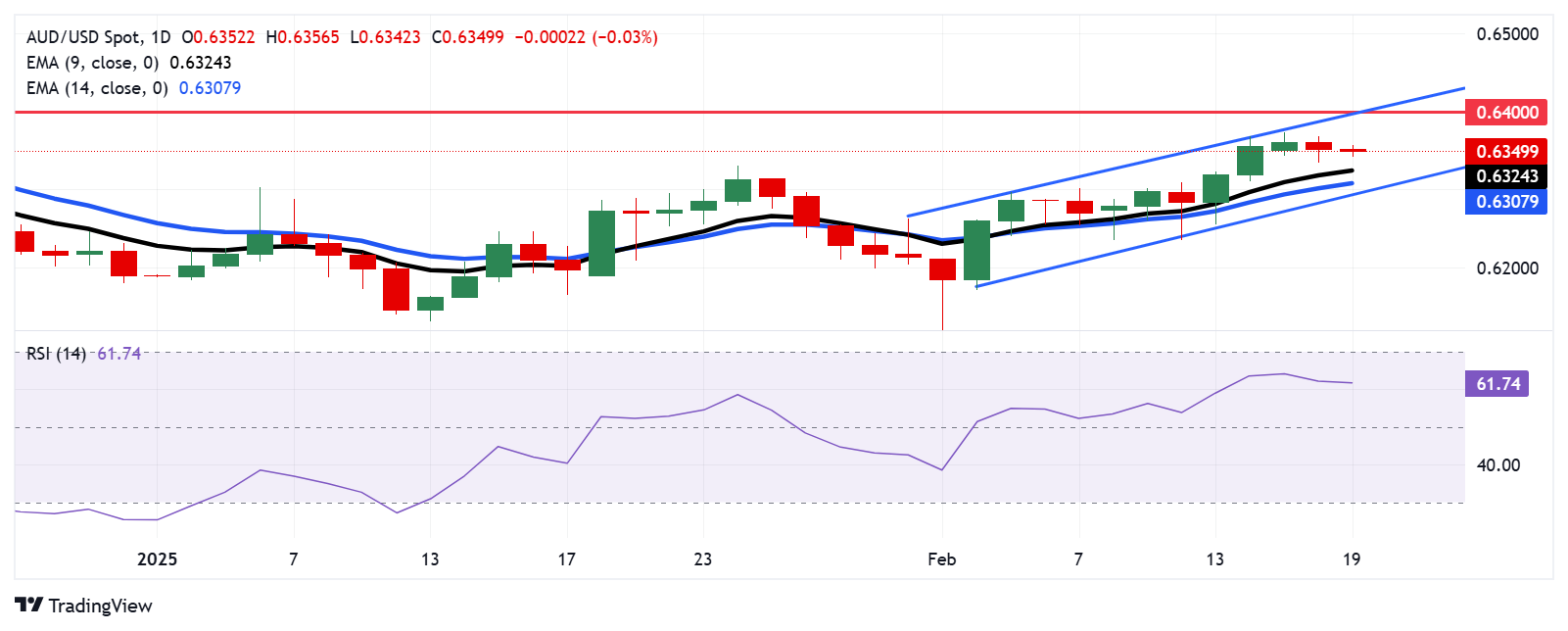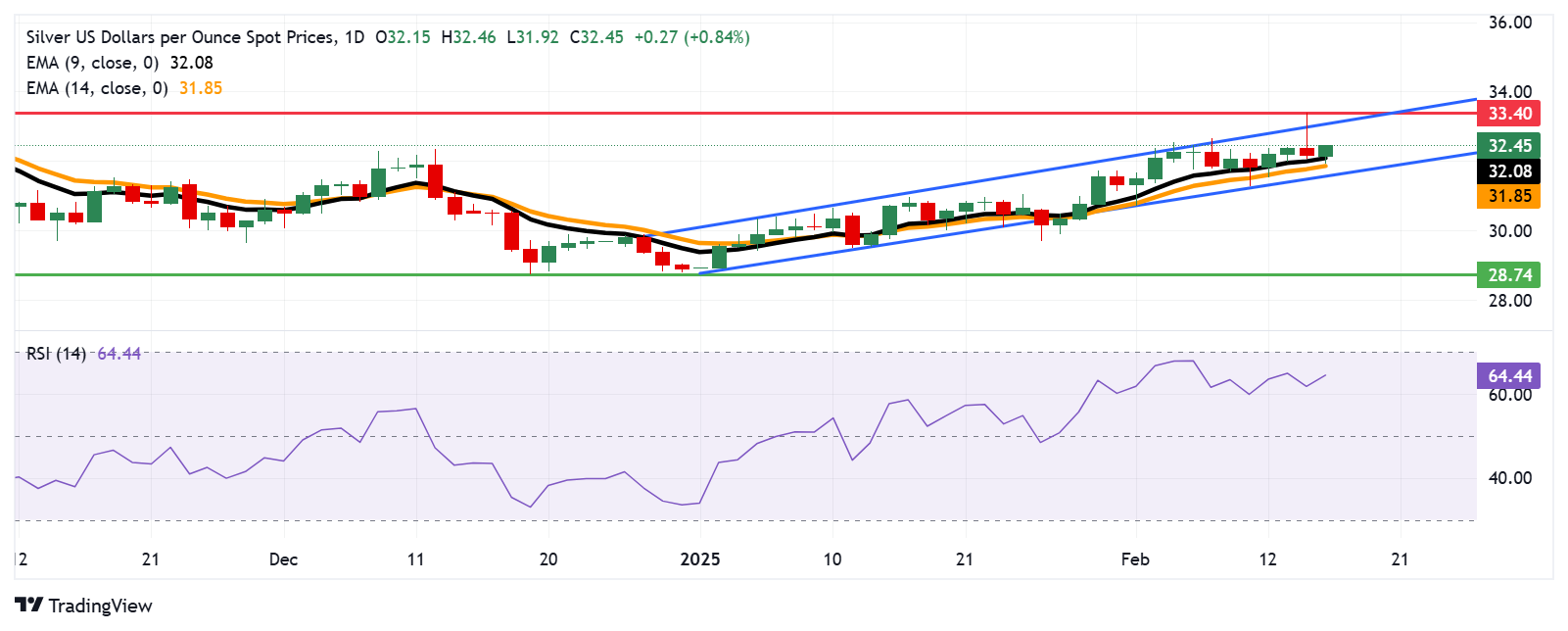Australian Dollar loses ground following fresh Trump tariff threats
- The Australian Dollar declines as market sentiment deteriorates amid fresh tariff threats from US President Donald Trump.
- Australia’s Wage Price Index increased by 0.7% QoQ in Q4 2024, missing the expected 0.8% rise.
- Hawkish remarks from Federal Reserve officials bolster the US Dollar.
The Australian Dollar (AUD) continues to weaken against the US Dollar (USD) for a second straight day on Wednesday, pressured by rising risk aversion following new tariff threats from US President Donald Trump.
Australia’s Wage Price Index increased by 0.7% quarter-over-quarter in Q4 2024, falling short of the expected 0.8% rise and down from the previous quarter’s 0.9% gain. Annually, the index grew by 3.2%, slowing from a revised 3.6% in the prior quarter and aligning with forecasts. This marks the slowest wage growth since Q3 2022.
The AUD faced additional downward pressure after the Reserve Bank of Australia (RBA) cut its Official Cash Rate (OCR) by 25 basis points (bps) to 4.10% on Tuesday—the first rate cut in four years.
Following the policy decision, RBA Governor Michele Bullock acknowledged that high interest rates have had an impact but cautioned that it is too soon to declare victory over inflation. Bullock also highlighted the strength of the job market and clarified that further rate cuts are not guaranteed, despite market expectations.
Australian Dollar weakens as the US Dollar strengthens on hawkish Fedspeak
- The US Dollar Index (DXY), which tracks the US Dollar’s performance against six major currencies, rises above 107.00 following Trump’s tariff threats and hawkish remarks from Federal Reserve (Fed) officials.
- President Trump said late Tuesday that he would likely impose tariffs of around 25% on foreign cars, while semiconductor chips and drugs are set to face higher duties, per Bloomberg. Trump added that an announcement will come as soon as April 2.
- San Francisco Fed President Mary Daly said on Tuesday that prospects of further rate cuts in 2025 remain uncertain despite an overall positive lean to US economic factors. Philadelphia Fed President Patrick Harker emphasized support for maintaining a steady interest rate policy, noting that inflation has remained elevated and persistent in recent months. Investors brace for the FOMC Minutes, which will be released on Wednesday.
- Federal Reserve Governor Michelle Bowman stated on Monday that rising asset prices may have slowed the Fed’s recent progress on inflation. While Bowman expects inflation to decline, she cautioned that upside risks remain and emphasized the need for more certainty before considering rate cuts.
- The US Census Bureau reported on Friday that Retail Sales fell by 0.9% in January, following a revised 0.7% increase in December (previously reported as 0.4%). This decline was sharper than the market’s expectation of a 0.1% drop.
- Fed Chair Jerome Powell said in his semi-annual report to Congress that the board officials “do not need to be in a hurry” to cut interest rates due to strength in the job market and solid economic growth. He added that US President Donald Trump’s tariff policies could put more upward pressure on prices, making it harder for the central bank to lower rates.
- On Monday, Chinese President Xi Jinping led a meeting with Alibaba co-founder Jack Ma and other prominent entrepreneurs, signaling Beijing’s renewed support for the private sector, which is now seen as crucial to economic recovery, according to Bloomberg. Xi emphasized the need to eliminate barriers that hinder equal access to production resources and fair market competition.
Australian Dollar poised to surpass 0.6350 amid a bullish market bias
The AUD/USD pair hovers around 0.6340 on Wednesday, trading within an ascending channel pattern that signals a bullish market bias. The 14-day Relative Strength Index (RSI) remains above 50, reinforcing the positive outlook.
On the upside, the AUD/USD pair may test the upper boundary of the ascending channel, which aligns with the key psychological resistance at 0.6400.
Support levels include the nine-day Exponential Moving Average (EMA) at 0.6324, followed by the 14-day EMA at 0.6307. A stronger support zone is near the lower boundary of the ascending channel at 0.6290.



